- Texas Go Math
- Big Ideas Math
- Engageny Math
- McGraw Hill My Math
- enVision Math
- 180 Days of Math
- Math in Focus Answer Key
- Math Expressions Answer Key
- Privacy Policy

McGraw Hill My Math Grade 4 Chapter 11 Lesson 7 Answer Key Convert Units of Time
All the solutions provided in McGraw Hill My Math Grade 4 Answer Key PDF Chapter 11 Lesson 7 Convert Units of Time will give you a clear idea of the concepts.
McGraw-Hill My Math Grade 4 Answer Key Chapter 11 Lesson 7 Convert Units of Time
The steps that you use to convert units of length, weight, and capacity can be used to convert units of time.
Math in My World

Audrey is going to watch a movie at the movie theater. The movie starts at 3:30 P.M. and ends at 5:37 P.M. How long is the movie in minutes?
Find the time interval, or the length of time from the start of the movie to the end of the movie. The time interval between 3:30 and 5:37 is ________________ hours and 7 minutes. ← Count the whole hours. From 3:30 to 5:30 is 2 hours. Count the remaining minutes. From 5:30 to 5:37 is 7 minutes. Since 1 hour = 60 minutes, multiply 60 by 2. 60 × 2 = _______________ 120 + 7 = _______________ So, the movie is _______________ minutes long. Answer: Find the time interval, or the length of time from the start of the movie to the end of the movie. The time interval between 3:30 and 5:37 is 2 hours and 7 minutes. ← Count the whole hours. From 3:30 to 5:30 is 2 hours. Count the remaining minutes. From 5:30 to 5:37 is 7 minutes. Since 1 hour = 60 minutes, multiply 60 by 2. 60 × 2 = 120, 120 + 7 = 127 So, the movie is 127 minutes long.

Guided Practice
Complete each conversion table.

Independent Practice

Compare. Use <, >, or =.
Question 11. How many times greater is one minute than one second? Answer: 1 minute equals to 60 seconds. Therefore, 1 minute is 60 times greater than one second.
Question 12. How many times greater is one hour than one minute? Answer: 1 hour equals to 60 minutes. Therefore, 1 hour is 60 times greater than one minute.
Question 13. How many times greater is one week than one day? Answer: 1 week equals 7 days. Therefore, one week is 7 times greater than one day.
Question 14. How many minutes are in the time interval from 1:22 P.M. to 5:44 P.M.? Answer: The time interval between 1:22 and 5:44 is 4 hours and 22 minutes. ← Count the whole hours. From 1:22 to 5:44 is 4 hours. Count the remaining minutes. From 1:22 to 5:44 is 22 minutes. Since 1 hour = 60 minutes, multiply 60 by 4. 60 × 4 = 240, 240 + 22 = 262 There are 262 minutes in 1:22 P.M. to 5:44 P.M.
Question 15. How many minutes are in the time interval from 7:09 A.M. to 10:36 A.M.? Answer: The time interval between 7:09 and 10:36 is 3 hours and 27 minutes. ← Count the whole hours. From 7:09 to 10:36 is 3 hours. Count the remaining minutes. From 7:09 to 10:36 is 27 minutes. Since 1 hour = 60 minutes, multiply 60 by 3. 60 × 3 = 180, 180 + 27 = 207 There are 207 minutes in 7:09 A.M. to 10:36 A.M.
Problem Solving

Question 17. Alex had to rent the pavilion at the park for a minimum of 3 hours. How many minutes is that? Answer: Given that: Alex had to rent the pavilion at the park for a minimum of 3 hours. Since 1 hour = 60 minutes, multiply 60 by 3. 60 × 3 = 180 mins Alex had to rent the pavilion at the park for a minimum of 180 mins.
Question 18. Mathematical PRACTICE Use Math Tools Justin painted his fence from 8:00 A.M. to 11:47 A.M. For how many minutes did he paint the fence? Answer: Given that: Justin painted his fence from 8:00 A.M. to 11:47 A.M. The time interval between 8:00 and 11:47 is 3 hours and 47 minutes. ← Count the whole hours. From 8:00 to11:47 is 3 hours. Count the remaining minutes. From 8:00 to11:47 is 47 minutes. Since 1 hour = 60 minutes, multiply 60 by 3. 60 × 3 = 180, 180 + 47 = 262 There are 262 minutes in 1:22 P.M. to 5:44 P.M.
Question 19. It took Aiden 20 minutes to walk to school. It took Callie 900 seconds to walk to school. Who took less time to walk to school? Answer: Given that: Aiden took 20 minutes and Callie took 900 seconds to walk to school. Since 1 minute equals to 60 seconds. 20 minutes will be equal, 200 × 60 = 12000 sec As 12,000 > 900. Callie took less time to walk to school.
HOT Problems
Question 20. Mathematical PRACTICE Find the Error Sadie wrote the following on the board. Find and correct her mistake. 2 years = 24 weeks Answer: 1 year equals to 12 months or 52 weeks. Sadie multiplied the number of years by 12 instead of 52. There are 2×12=24 months or 2×52=104 weeks in 2 years.
Question 21. Building on the Essential Question How does multiplication relate to time conversions? Answer: Multiplication is done to convert the larger units of time to smaller units of time. For example, to convert 5 hours to minutes. We multiply by 60 as 1 hours equals to 60 mins. Thus, 5 hours in minutes will be 5×60 = 300 mins.
McGraw Hill My Math Grade 4 Chapter 11 Lesson 7 My Homework Answer Key
Convert units to complete each equation.
Question 1. 3 minutes = ________________ seconds Answer: Since 1 minute = 60 seconds, multiply 60 by 3. 60 × 3 = 180 3 minutes = 180 seconds
Question 2. 5 weeks = ________________ days Answer: Since 1 week = 7 days, multiply 7 by 5. 7 × 5 = 35 5 weeks = 35 days
Question 3. _________________ months = 5 years Answer: Since 1 year = 12 months, multiply 12 by 5. 12 × 5 = 60 60 months = 5 years
Question 4. ________________ minutes = 6 hours Answer: Since 1 hour = 60 minutes, multiply 60 by 6. 60 × 6 = 360 360 minutes = 6 hours
Question 5. 4 days = _________________ hours Answer: Since 1 day = 24 hours, multiply 24 by 4 24 × 4 = 96 4 days = 96 hours
Question 6. __________________ weeks = 8 years Answer: 1 year equals 52 weeks. 8 years will be 8×52 = 416 416 weeks = 8 years
Question 7. 1\(\frac{1}{2}\) days = ________________ hours Answer: 1) Convert the whole days 1 day = 24 hrs 2) Convert the fractions \(\frac{1}{2}\) of 24 hours equals 12 hours. 3) Add the parts 24 + 12 = 36 hours. 1\(\frac{1}{2}\) days = 36 hours.
Question 8. 3\(\frac{2}{7}\) weeks = _________________ days Answer: 1) Convert the whole weeks Since 1 week = 7 days, 3 × 7 = 21 days. 2) Convert the fractions \(\frac{2}{7}\) of 7 days equals 2 days. 3) Add the parts 21 + 2 = 23 days 3\(\frac{2}{7}\) weeks = 23 days.
Question 9. _______________ months = 4\(\frac{3}{4}\) years Answer: 1) Convert the whole years Since 1 year = 12 months, 4 × 12 = 48 months. 2) Convert the fractions \(\frac{3}{4}\) of 12 months equals 9 months. 3) Add the parts 48 + 9 = 57 months 57 months = 4\(\frac{3}{4}\) years
Question 10. _________________ minutes = 6 hours and 42 minutes Answer: Since 1 hour equal 60 minutes, multiply 60 by 6. 60 × 6 = 360 360 + 42 = 402 minutes 402 minutes = 6 hours and 42 minutes
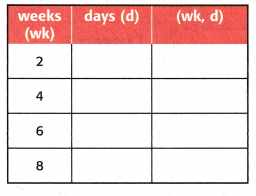
Question 13. Emma is 9\(\frac{1}{4}\) years old. How many months old is Emma? Answer: Given that: Emma is 9\(\frac{1}{4}\) years old. Since 1 hour equal 60 minutes, multiply 60 by 9. 60×9 = 540 Emma is 540 months old.
Question 14. Mathematical PRACTICE Model Math Vincent is watching a movie that lasts 1 hour and 37 minutes. He has watched 52 minutes so far. How many minutes are left in the movie? Answer: Given that: Vincent is watching a movie that lasts 1 hour and 37 minutes. He has watched 52 minutes so far. 1 hour equals 60 minutes. 60 + 37 = 97 mins. 1 hour 37 minutes equals to 97 mins He has watched 52 minutes so far. So the left over minutes in the movie will be 97-52 = 45 mins
Question 15. Lexie started her homework at 4:30 P.M. She finished at 5:05 P.M. How many seconds did it take her to finish her homework? Answer: Given that: Lexie started her homework at 4:30 P.M. She finished at 5:05 P.M. The time interval between 4:30 and 5:05 is 1 hour and 25 minutes. ← Count the whole hours. From 4:30 to 5:05 is 1 hour. Count the remaining minutes. From 4:30 to 5:05 is 25 minutes. Since 1 hour = 60 minutes. 60 + 45 = 105 mins Since 1 min equals 60 seconds. 105 × 60 = 6300 seconds There are 6300 seconds to finish her homework.
Vocabulary Check
Question 16. How many seconds are in 1 minute? Answer: There are 60 seconds in a minute.
Test Practice
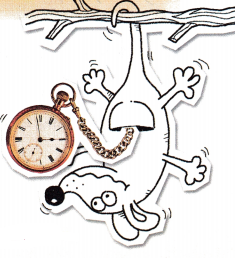
Leave a Comment Cancel Reply
You must be logged in to post a comment.

Converting Time Units
Our Converting Time Units lesson plan teaches students the basic units of time and teaches students how to convert units of time. Students practice doing various time conversions in order to solidify their understanding of the lesson material.
Included with this lesson are some adjustments or additions that you can make if you’d like, found in the “Options for Lesson” section of the Classroom Procedure page. One of the optional additions to this lesson is to have each of your students create one extra word problem, collect all of them, and turn them into a quiz/test for students.
Description
Additional information, what our converting time units lesson plan includes.
Lesson Objectives and Overview: Converting Time Units identifies the basic units of time and demonstrates the operations used to change units of time. At the end of the lesson, students will be able to use multiplication and division to convert units of time using seconds, minutes, hours, days, months, and years. This lesson is for students in 3rd grade and 4th grade.
Classroom Procedure
Every lesson plan provides you with a classroom procedure page that outlines a step-by-step guide to follow. You do not have to follow the guide exactly. The guide helps you organize the lesson and details when to hand out worksheets. It also lists information in the blue box that you might find useful. You will find the lesson objectives, state standards, and number of class sessions the lesson should take to complete in this area. In addition, it describes the supplies you will need as well as what and how you need to prepare beforehand.
Options for Lesson
Included with this lesson is an “Options for Lesson” section that lists a number of suggestions for activities to add to the lesson or substitutions for the ones already in the lesson. If you’d like to add to the homework assignment, you can i nclude the practice page for homework. An optional addition to this lesson is to pair it with a lesson on computing time passage. For additional practice, you can increase the number of word problems students must create and share with classmates. You could also have each of your students create one extra word problem, collect all of them, and turn them into a quiz/test for students. Finally, you can make sure to review the abbreviations for each time unit.
Teacher Notes
The teacher notes page includes a paragraph with additional guidelines and things to think about as you begin to plan your lesson. This page also includes lines that you can use to add your own notes as you’re preparing for this lesson.
CONVERTING TIME UNITS LESSON PLAN CONTENT PAGES
The Converting Time Units lesson plan includes two pages of content. The units of time that we use every day include: seconds, minutes, hours, days, weeks, months, years, decades, and centuries. The lesson includes a helpful chart showing how different units of time relate to each other. For example, it shows that a minute has 60 seconds, an hour has 3,600, and a day has 86,000!
The units of time we use most often include: 60 seconds = 1 minute, 60 minutes = 1 hour, 24 hours = 1 day, 7 days = 1 week, 365 days = 1 year, 52 weeks = 1 year, 10 years = 1 decade, and 100 years = 1 century. The lesson also lists some helpful conversion to remember, like that the phrase “quarter of an hour” means 15 minutes.
To convert time, we multiply or divide. If we’re going from a large unit to a small unit, we multiply. If we’re going from a small unit to a large unit, we divide. For example, if we know that a minute has 60 seconds and we want to figure out how many seconds are in 5 minutes, we multiply 5 by 60. By doing this, we find out that 5 minutes equals 300 seconds.
CONVERTING TIME UNITS LESSON PLAN WORKSHEETS
The Converting Time Units lesson plan includes two worksheets: an activity worksheet and a homework assignment. You can refer to the guide on the classroom procedure page to determine when to hand out each worksheet.
TIME CONVERSION ACTIVITY WORKSHEET
For the activity worksheet, students will create four time conversion word problems for a classmate to solve, using a different unit of time for each problem. They will create an answer key to go along with their problems.
CONVERTING TIME UNITS HOMEWORK ASSIGNMENT
The homework assignment asks students to first convert each unit of time. They will then solve five different word problems.
Worksheet Answer Keys
This lesson plan includes an answer key for the homework assignment. If you choose to administer the lesson pages to your students via PDF, you will need to save a new file that omits these pages. Otherwise, you can simply print out the applicable pages and keep these as reference for yourself when grading assignments.
Thank you for submitting a review!
Your input is very much appreciated. Share it with your friends so they can enjoy it too!
Great short lesson. On target and to the point.
Excellent Resource
This resource is top quality!
It was a great resource. Thanks.
Converting time units
It was a great resource.
As a facilitator of math, this was a great resource to share and help build confidence.
Related products

Careers: Archaeologist

Careers: Civil Engineer

Make Your Life Easier With Our Lesson Plans
Stay up-to-date with new lessons.

- Lesson Plans
- For Teachers
© 2024 Learn Bright. All rights reserved. Terms and Conditions. Privacy Policy.
- Sign Up for Free
[FREE] Fun Math Games & Activities Packs
Always on the lookout for fun math games and activities in the classroom? Try our ready-to-go printable packs for students to complete independently or with a partner!
In order to access this I need to be confident with:
Converting U of T
Converting units of time
Here you will learn about converting units of time, including converting between seconds, minutes and hours.
Students will first learn about converting units of time as part of measurement and data in the 5 th grade, and expand on their understanding in ratios and proportional relationships in 6 th grade.
What is converting units of time?
Converting units of time is converting between seconds, minutes and hours. To convert units of measurement, you need to first understand the relationships between the units and use the correct time conversion factor.
The most basic units of time are seconds, minutes, hours and days.
In the United States, the customary units of time is the system of measurements used. These measurements are used on a daily basis. Look at the conversion chart below:
\hspace{2.2cm} Customary Units of Time
*Note: In a leap year, an extra day is added to the calendar and the number of days in a year are 366. *
Converting units of time using conversion tables
A conversion table is a table of equivalents that is used to change units of measure into other units. These are sometimes referred to as input-output tables.
You can use a conversion table to find the number of seconds in a certain number of minutes. See the table below:
For every 60 seconds, another minute is added. If you wanted to find the number of seconds in 4 minutes, you could add another row to the conversion table and add 60 seconds to 180.
Converting units of time using conversion factors
A conversion factor is the number used to change one set of units to another by either multiplying or dividing. Conversion factors are best used when dealing with a larger number of units.
When converting a larger number of seconds to minutes, it may be easier to use the conversion factor and divide the number of seconds by 60.
For example,
Convert 1,920 seconds to minutes.
1,920 \div 60=32 \text { minutes }
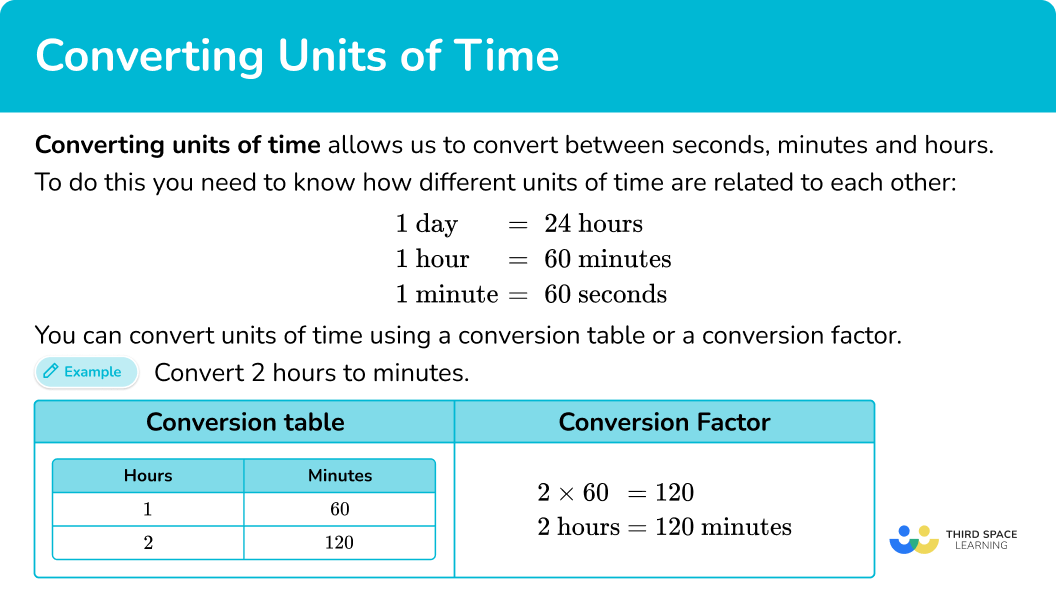
Common Core State Standards
How does this relate to 5 th grade math and 6th grade math?
- Grade 5: Measurement and Data (5.MD.A.1) Convert among different-sized standard measurement units within a given measurement system (for example, convert 5 \, cm to 0.05 \, m ), and use these conversions in solving multi-step, real world problems.
- Grade 6: Ratios and Proportional Relationships (6.RP.A.3d) Use ratio reasoning to convert measurement units; manipulate and transform units appropriately when multiplying or dividing quantities.
How to convert units of time using conversion table
In order to convert units of time, you need to:
Check the units involved.
Draw conversion table and label with correct units.
Add on the number of units until you reach the final answer.
Write your final answer.
![my homework lesson 7 convert units of time [FREE] Units of Measurement Check for Understanding (Grade 4 to 5)](https://thirdspacelearning.com/wp-content/uploads/2023/10/Units-of-Measurement-listing-image.png)
[FREE] Units of Measurement Check for Understanding (Grade 4 to 5)
Use this quiz to check your grade 4 to 5 students’ understanding of units of measurement. 10+ questions with answers covering a range of 4th and 5th grade units of measurement topics to identify areas of strength and support!
Converting units of time examples
Example 1: convert days to hours using conversion table.
How many hours are there in 4 days?
1 \text { day }=24 \text { hours }
2 Draw conversion table and label with correct units.
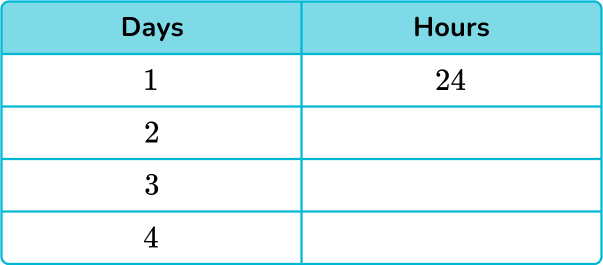
3 Add on the number of units until you reach the final answer.
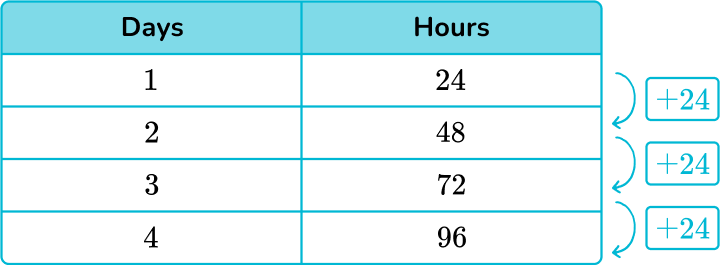
2 \text { days }=24+24=48 \text { hours }
3 \text { days }=48+24=72 \text { hours }
4 \text { days }=72+24=96 \text { hours }
4 Write your final answer.
There are 96 hours in 4 days.
Example 2: convert hours to minutes using conversion table
How many minutes are there in 6 hours?
1 \text { hour }=60 \text { minutes. }
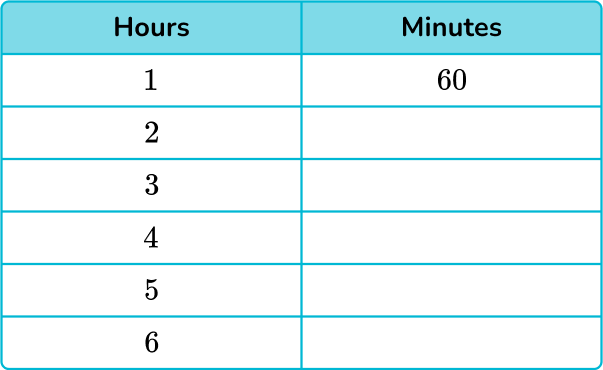
2 \text { hours }=60+60=120 \text { minutes }
3 \text { hours }=120+60=180 \text { minutes }
4 \text { hours }=180+60=240 \text { minutes }
5 \text { hours }=240+60=300 \text { minutes }
6 \text { hours }=300+60=360 \text { minutes }
There are 360 minutes in 6 hours.
How to convert units of time using conversion factor
Multiply or divide by the conversion factor.
Write the answer.
Example 3: convert hours to hours and minutes
Find the number of hours and minutes in 1.4 hours.
So the conversion factor is 60.
Based on the decimal, we already know that there is 1 hour. Concentrate on the decimal part of the original number, 0.4. This part represents the minutes.
Multiply 0.4 by 60 to convert to minutes:
0.4 \times 60=24
1.4 hours is equal to 1 hour 24 minutes.
Example 4: convert minutes to hours
Convert 324 minutes to hours.
You are going from a smaller unit (minutes) to a larger unit (hours), so you will divide the number of minutes by 60.
324 \div 60=5.4
324 minutes is 5.4 hours.
Example 5: convert minutes to seconds
Convert 520 minutes to seconds.
1 \text { minute } = 60 \text { seconds. }
You are going from a larger unit (minutes) to a smaller unit (seconds), so you will multiply the number of minutes by 60.
520 \times 60=31,200
520 minutes is equal to 31,200 seconds.
Example 6: converting units of time word problem
How many seconds are equal to 3 hours?
1 \text { hour } = 60 \text { minutes. }
You will use the conversion factor of 60 two times.
First, you will need to find the number of minutes in 3 hours.
3 \times 60=180 \text { minutes }
You can now find the number of seconds in 180 minutes.
180 \times 60=10,800 \text { seconds }
There are 10,800 seconds in 3 hours.
Teaching tips for converting units of time
- Students should be familiar with, or have access to, the important relationships within the different units of time. These can be displayed in the classroom or be included in a student’s interactive math notebook for easy reference.
- Time worksheets should only be used for students who are showing difficulty with telling time.
Easy mistakes to make

Related units of measurement lessons
- Units of measurement
- Converting metric units
- Conversion of measurement units
- Metric units of measurement
Practice converting units of time questions
1) How many hours are there in 2 days? Use a conversion table to find the answer.

First check the units involved in the problem.
1 \text { day } = 24 \text { hours. }
Draw a conversion chart and label with correct units.

24+24=48 \text { hours }
There are 48 hours in 2 days.
2) How many minutes are there in 3 hours? Use a conversion table to find the answer.
190 minutes
180 minutes
310 minutes
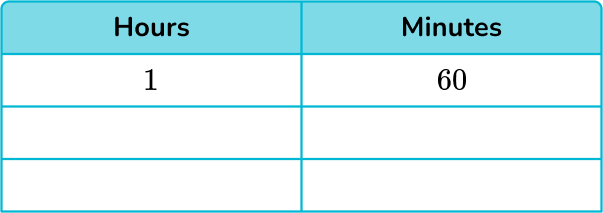
60+60+60=180 \text { minutes }
There are 180 minutes in 3 hours.
3) Convert 4.35 hours to hours and minutes?
4 hours and 35 minutes
4 hours and 25 minutes
4 hours and 21 minutes
4 hours and 28 minutes
Concentrate on the decimal fraction part, which represents the minutes.
0.35\times 60=21
So 4.35 hours is 4 hours and 21 minutes.
4) Convert 75 minutes to hours.
1.5 hours minutes
There are 60 minutes in an hour, so our conversion factor is 60.
Because you are going from a smaller unit to a larger unit, you will divide the number of minutes by 60.
75\div 60=1.25
75 minutes is the same as 1.25 hours.
5) Convert 135 minutes to hours and minutes.
13 hours and 5 minutes
1 hours and 35 minutes
2 hours and 25 minutes
2 hours and 15 minutes
135\div 60=2.25
There are 2 hours.
You will then focus on the decimal to find the number of minutes.
0.25\times 60=15
There are 15 minutes.
135 minutes is the same as 2 hours and 15 minutes.
6) How many hours are in 2 weeks?
First, you will need to find the number of days in 2 weeks. There are 7 days in a week, so 7 \times 2=14 \text { days. }
There are 24 hours in 1 day, so multiply 14 by 24.
14 \times 24=336 \text { hours }
There are 336 hours in 2 weeks.
Converting units of time FAQs
The second is the most commonly used and recognized smallest unit of time. However, in fields such as computing and electronics, the millisecond (\cfrac{1}{1,000 \, th} of a second ) and microsecond (\cfrac{1}{1,000,000 \, th} of a second ) are also used.
First, look at the hour hand (the shortest hand) to determine the hour. Then look at the minute hand (the longest hand) to determine the minutes. The minute hand points to the number of minutes past the hour.
The number of days in a month varies depending on the month and the year. The following months have 31 days: January, March, May, July, August, October and December. The following months have 30 days: April, June, September, and November. The month of February has 28 days, except during a leap year, where it has 29 days.
The next lessons are
- Represent and interpret data
- Converting fractions, decimals, and percentages
Still stuck?
At Third Space Learning, we specialize in helping teachers and school leaders to provide personalized math support for more of their students through high-quality, online one-on-one math tutoring delivered by subject experts.
Each week, our tutors support thousands of students who are at risk of not meeting their grade-level expectations, and help accelerate their progress and boost their confidence.

Find out how we can help your students achieve success with our math tutoring programs .
[FREE] Common Core Practice Tests (Grades 3 to 6)
Prepare for math tests in your state with these Grade 3 to Grade 6 practice assessments for Common Core and state equivalents.
40 multiple choice questions and detailed answers to support test prep, created by US math experts covering a range of topics!
Privacy Overview

How to Convert Units of Time
A straightforward guide to units of time and their relation to each other

Author Tess Loucka
Published October 20, 2023

Published Oct 11, 2023
Published October 11, 2023
- Key takeaways
- Units of time are the numerical values we use to measure time.
- When converting a larger unit of time to a smaller unit, multiply. When converting a smaller unit to a larger unit, divide.
- Months are standardized to all have 30 days in time-conversion problems.
Table of contents
- Understanding units of time
- How to convert units of time
Practice problems
Have you ever wondered how old you are? I mean, how old you are really? How many weeks, days, hours, minutes, and seconds, how much time has passed since you were born?
Knowing how to convert units of time is essential for answering questions like how old you are down to the day. It also comes in handy when marking your calendar for a date in the future or simply reading a clock to tell the time.
Converting units of time is one math topic that you’ll use every day throughout your life! So, what exactly is a unit of time anyway?
Understanding Units of Time
A unit of time a numerical value we use to measure time. Units of time include seconds, minutes, hours, days, weeks, months, and years.
When thinking about how many seconds in a minute , or how many seconds in an hour , what you’re really thinking about are time unit conversions.
Before we get into unit conversion , let’s go over the values of each unit of time.
1 minute = 60 seconds
1 hour = 60 minutes
- 1 day = 24 hours
1 week = 7 days
- 1 month = 30 days
- 1 year = 12 months
You may be wondering why we say one month is equal to 30 days when we know that’s not always true. For the purpose of standardization, months are said to be 30 days long when calculating time conversion.
Additionally, even though some years are leap years that contain one additional day, we always treat one year as equal to 365 days during time unit conversions.
A general rule of thumb for time conversion is to multiply when converting a larger unit to a smaller unit and divide when converting a smaller unit to a larger unit.
For instance, to convert 1 hour into minutes, you’d multiply by 60 because there are 60 minutes in an hour. For example, if we want to know how many minutes are in 3 hours, we’d follow this formula:
3 x 60 = 120 minutes
On the contrary, to convert minutes into hours, you’d divide the amount of minutes by 60.
How many hours are in 420 minutes?
To solve this problem, all we need to do is divide 420 by 60.
420 / 60 = 7
So there are 7 hours in 420 minutes.
Another thing to remember is that time on a clock always revolves around the number 60. There are 60 seconds and 60 minutes on a clock face, so when we convert seconds to minutes or minutes to hours, we’ll use the number 60 quite a bit.
Converting Seconds to Minutes
To convert seconds to minutes, remember two key things:
- There are 60 seconds in 1 minute. Always use the number 60 when converting seconds to minutes.
- We are going from a smaller unit of time to a larger unit of time; therefore, we divide!
Ex. Convert 100 seconds to minutes . Divide 100 by 60. Sixty goes into 100 one time. The remainder is 40. So, 100 seconds is equal to 1 minute and 40 seconds.

Converting Minutes to Seconds
Converting minutes to hours.
Two tips to remember:
- 60 minutes = 1 hour
- We are going from a smaller unit of time to a larger unit of time, so we have to divide!
Ex. Convert 240 minutes to hours . Divide 240 by 60 to get 4. That means 4 hours equals 240 minutes.
Converting Hours to Minutes
Two tips to remember:
- We are going from a larger unit of time to a smaller unit of time, so multiply!

Ex. Convert two and a half hours to minutes . Multiply 2 by 60 to get 120. Add 30 minutes. 120+30=150. There are 150 minutes in two and a half hours.
Converting Hours to Days
- 24 hours = 1 day

Ex. Convert 28 hours to days . Divide 28 by 24. Twenty-four goes into 28 one time. The remainder is 4. So, there is 1 day and 4 hours in 28 hours.
Converting Days to Hours
Ex. Convert 7 days to hours. Multiply 7 by 24 to get 168. That means 168 hours equals 7 days.
Converting Days to Weeks
- 7 days = 1 week
Ex. Convert 35 days to weeks. Thirty-five divided by 7 is 5. That means 5 weeks equals 35 days.
Converting Weeks to Days
Ex. Convert 2 weeks and 3 days into days. Two multiplied by 7 is 14. Add 3 to get 17. There are 17 days in 2 weeks and 3 days.
Converting Weeks to Months
- 4 weeks = 1 month
Ex. Convert 6 weeks to months. Six divided by 4 is 1 with a remainder of 2. So, there is 1 month and 2 weeks in 6 weeks.
Converting Months to Weeks
- 1 month = 4 weeks
Ex. Convert 8 months to weeks. Eight multiplied by 4 is 32. So, there are 32 weeks in 8 months.
Converting Months to Years
- 12 months = 1 year
Ex. Convert 24 months to years. Twenty-four divided by 12 is 2. That means 2 years equals 24 months.
Converting Years to Months
Ex. Convert 10 years to months. Multiply 10 by 12 to get 120. That means 120 months equals 10 years.
How to Convert Non-Consecutive Units of Time
By now, we’ve gone over the rules for converting consecutive units of time, like minutes to seconds, or months to years. But what about non-consecutive conversion? How do you convert minutes to months? Or seconds to hours?
To convert non-consecutive units, start with the larger unit and work your way down to the smaller unit. Breaking the problem down into smaller problems helps us!
Let’s try turning one week into seconds:
Start by converting 1 week into hours. Since we are going from a larger unit of time to a smaller unit of time, we multiply:
1 day = 24 hours
Therefore, we multiply 7 x 24 to get 168 hours in one week.
Next, let’s convert 168 hours into minutes. Once again, we are going from large to small so we multiply.
Therefore, we multiply 60 minutes by 168 hours to get 10,080 minutes.
For the last step, convert 10,080 minutes into seconds. You guessed it! We multiply again
Multiply 60 seconds by 10,080 minutes to get 604,800 seconds.
In other words:
7 days x 24 hours = 168 hours
168 hours x 60 minutes = 10,080 minutes
10,080 minutes x 60 seconds = 604,800 seconds
So, there are 604,800 seconds in 1 week.

Answer: 10,080
Start with the largest unit of time and work down to the smallest. There are 7 days in one week. Each day, there are 24 hours. In each hour there are 60 minutes. 7x24x60=10,080.
Answer: 8,100
Start with the largest unit of time and work down to the smallest. In 1 hour, there are 60 minutes. That means 2 hours equals 120 minutes. Add 15 minutes to that to get 135 minutes. There are 60 seconds in each minute. 135×60=8,100.
Answer: 436
Start with the largest unit of time and work down to the smallest. In 1 year, there are 365 days. Every month counts as 30 days, so 2 months equals 60 days. 365+60=425. Add 11 days to that to get 436.
FAQs about Converting Time
Seconds, minutes, hours, days, weeks, months, and years.
The zeptosecond. A zeptosecond is a trillionth of a billionth of a second. However, the second is the smallest unit of time we use on a daily basis.
There are 60 minutes in an hour, so to convert hours to minutes, multiply by 60. When converting minutes to hours, you divide.

Lesson credits

Tess Loucka
Tess Loucka discovered her passion for writing in high school and has not stopped writing since. Combined with her love of numbers, she became a math and English tutor, focusing on middle- and high-school-level topics. Since graduating from Hunter College, her goal has been to use her writing to spread knowledge and the joy of learning to readers of all ages.

Parents, sign up for a DoodleMath subscription and see your child become a math wizard!

What we offer
Quick links
All rights reserved.

Are you a parent, teacher or student?
Get started for free!
Maths information pack
We ask for your contact info so we can send our info pack directly to your inbox for your convenience, exam prep information pack, case studies information pack.
Book a chat with our team

I’m new to Doodle

My school is already using Doodle

Information pack
We ask for your contact info so that our education consultants can get in touch with you and let you know a bit more about doodle., student login, which programme would you like to use.
DoodleMaths
DoodleTables
DoodleEnglish
DoodleSpell
If you’d like to use Doodle’s browser version, please visit this page on a desktop.
To log in to Doodle on this device, you can do so through our apps. You can find out how to download them here:

- --> CONVERTING UNITS OF TIME
Login as parent/teacher to assign this.
Converting Units of Time
To play this lesson, click on the link below:
https://www.turtlediary.com/lesson/converting-units-of-time.html
To know more about different lessons, please visit www.turtlediary.com
Hope you have a good experience with this site and recommend to your friends too.

Time Videos

Time Quizzes
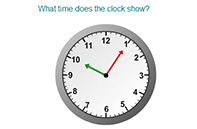

Time Worksheets
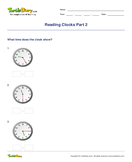
Similar Lessons

- • Unlimited access to over thousands of worksheets and activities for all grade levels.
- • Award-winning educational games and videos.
- • Teacher created quizzes with step by step solution.
- • Ad-free experience for children.
- • Unlimited access to Interactive Stories with "Read to me" feature.
- • Informative assessment tools with detailed reports pointing out successes and weak spots.
- • Audio Instructions for all games.
How to Convert Between Units of Time
Converting Units of Time

Converting Between Minutes and Seconds
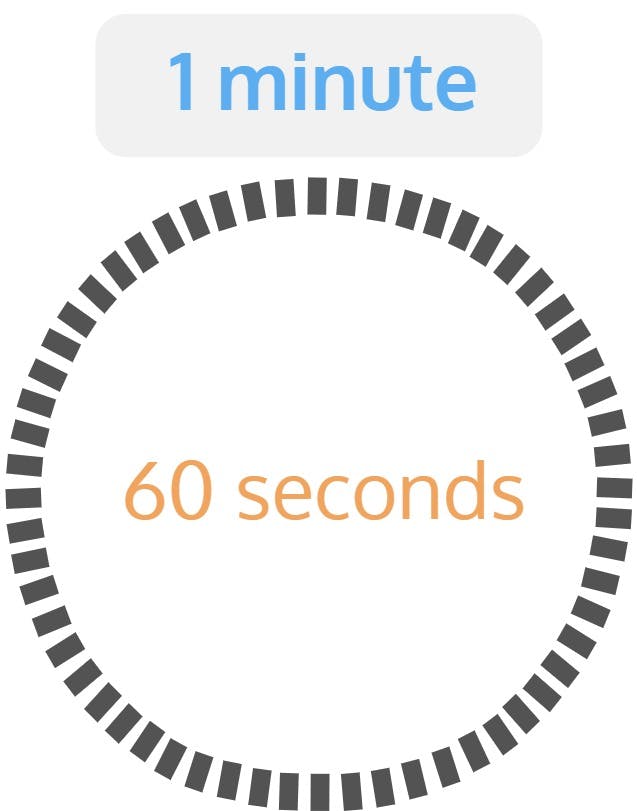
90 minutes = _______ seconds
90 minutes × 60 = 5,400 seconds ✅
7200 seconds = _______ minutes
7200 ÷ 60 = ?
Converting Between Hours and Minutes
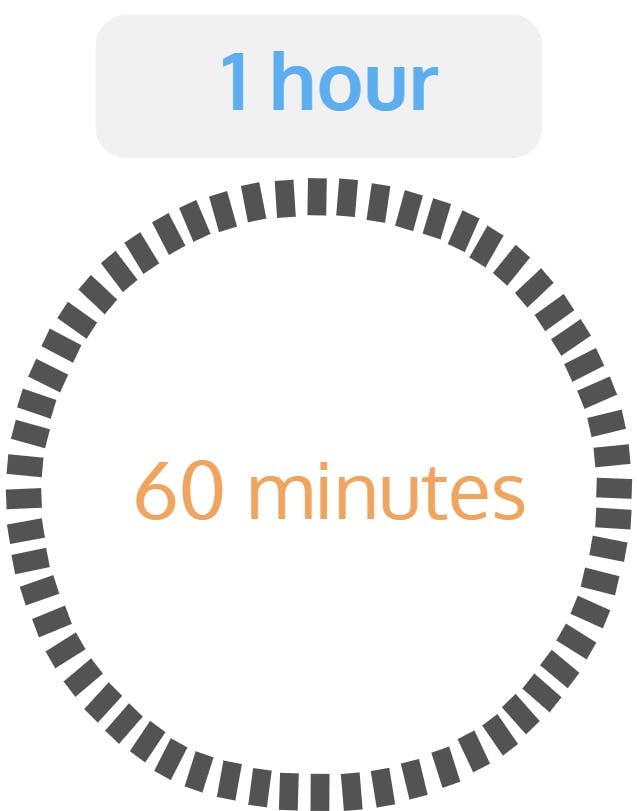
12.5 hours = _______ minutes
12.5 × 60 = ?
12.5 × 60 = 750 minutes ✅
1380 minutes = _______ hours
1380 ÷ 60 = 23 hours
Converting Between Days and Hours
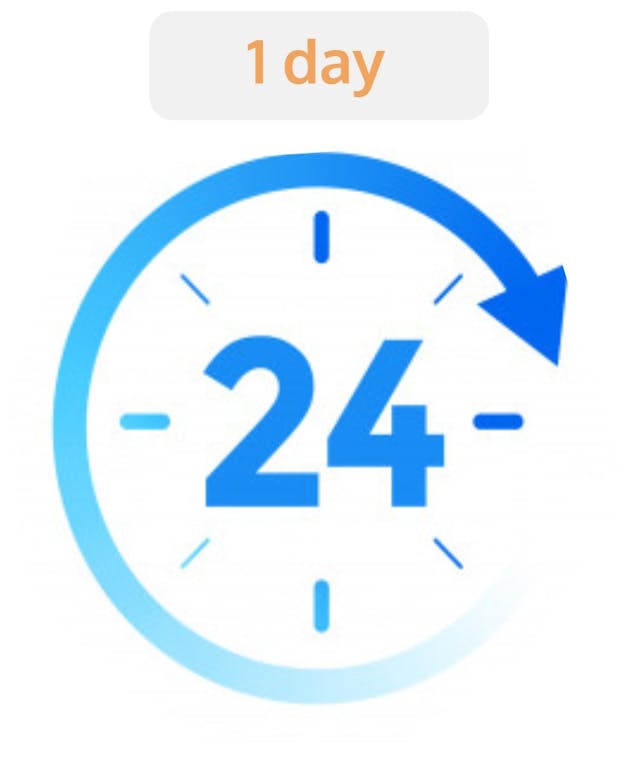
15 days = _______ hours
15 × 24 = 360 hours ✅
960 hours = ____ days .
960 ÷ 24 = 40 days
Converting Between Weeks and Days

14 × 7 = 98 days
336 days = _______ weeks
336 days ÷ 7 = 48 weeks ✅
Convert Between Months and Years
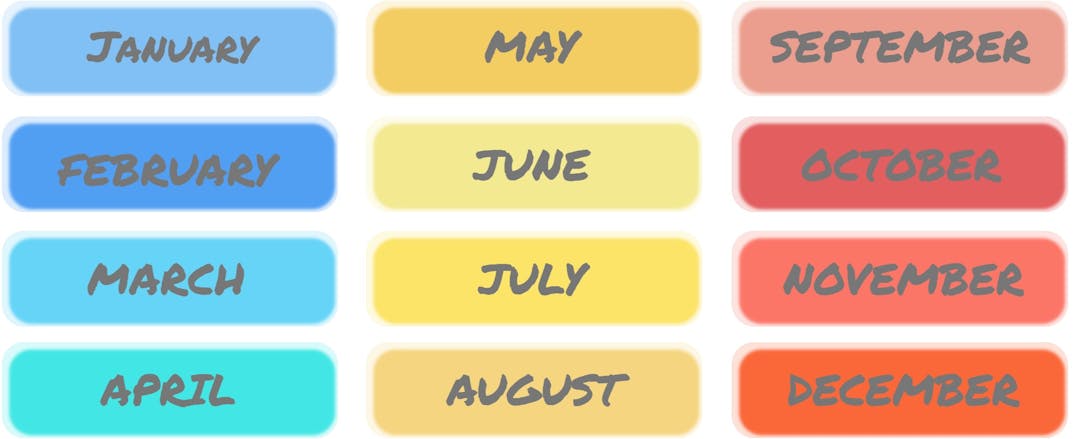
168 months = _______ years
168 months ÷ 12 = 14 years
7 years = _______ months
7 × 12 = 84 months
Lesson Streak

Learn Spelling
Learn grammar, learn handwriting.

You are using an outdated browser and it's not supported. Please upgrade your browser to improve your experience.
- LOGIN FOR PROGRAM PARTICIPANTS
- PROGRAM SUPPORT
Create Conversion Tables For Units Of Time
Description.
Objective: Create conversion tables for units of time, and use the tables to solve problems.
In Lesson 3, students investigate the relationships between units of time. They discover a similarity in converting from hours to minutes and minutes to seconds. Students are able to reason that, for both sets of conversion, the values in the two tables will be the same because there are 60 seconds in a minute and 60 minutes in an hour. Students also convert from days to hours. The clock and the number line are used as tools to develop the conversion tables.
There may be cases when our downloadable resources contain hyperlinks to other websites. These hyperlinks lead to websites published or operated by third parties. UnboundEd and EngageNY are not responsible for the content, availability, or privacy policies of these websites.
- Grade 4 Mathematics Module 7, Topic A, Lesson 3
Prerequisites
- CCSS Standard:
Related Guides and Multimedia
Our professional learning resources include teaching guides, videos, and podcasts that build educators' knowledge of content related to the standards and their application in the classroom.
There are no related guides or videos. To see all our guides, please visit the Enhance Instruction section here .
If you're seeing this message, it means we're having trouble loading external resources on our website.
If you're behind a web filter, please make sure that the domains *.kastatic.org and *.kasandbox.org are unblocked.
To log in and use all the features of Khan Academy, please enable JavaScript in your browser.
Grade 6 Math (SCPS pilot)
Course: grade 6 math (scps pilot) > unit 5.
- Converting units: minutes to hours
Convert units of time
- Converting units of time review (seconds, minutes, & hours)
- Converting units: metric distance
- Converting units: centimeters to meters
- Convert units (metrics)
- Metric units of mass review (g and kg)
- Metric units of length review (mm, cm, m, & km)
- Metric units of volume review (L and mL)
- U.S. customary and metric units
- Converting units: US volume
- Same length in different units
- Convert units (US customary)
- US Customary units of length review (in, ft, yd, & mi)
- US Customary units of weight review (oz & lb)
- US Customary units of volume review (c, pt, qt, & gal)
- Your answer should be
- an integer, like 6
- an exact decimal, like 0.75
- a proper fraction, like 1 / 2 or 6 / 10
- an improper fraction, like 10 / 7 or 14 / 8
- a mixed number, like 1 3 / 4
Converting Units of Time
- Switch to Parent
- Switch to Student

You've reached your daily practice limit of 12 questions.
When you sign up for a free account and login, you can play all you'd like.
(Must be 18 years old to sign up.)
Online Math Activity - Converting Units of Time
Get ready to practice converting units of time with your third grade class! Students will practice converting days to weeks, hours to days, minutes to hours, and so on in this digital math game. Here are a few sample math questions your students may be expected to answer in this telling time activity:
- "Drag and drop the symbol that makes the number sentence true. 300 minutes is [greater than, less than, or equal to] 3 hours."
- "Dayton's baby sister is six weeks old. How many days are in six weeks?"
- "Convert from minutes to hours. [Blank] minutes equals 9 hours."
- "How many minutes are in 2 hours?"
- "Cyrus slept for eight hours last night. How many minutes are in eight hours?"
As students work their way through the math activity, they can count on plenty of handy features to help them make the most out of their math practice session:
- Hint Button - When children get stuck on a question and need a little help, they can click on the Hint Button. The hint consists of a written or pictorial clue that will point children in the right direction without giving away the answer.
- Explanation Page - Students are bound to get an answer wrong every now and then. When they do, a detailed explanation page pops up on the practice screen to show them the correct answer, accompanied by an easy-to-understand explanation to help them learn from mistakes.
- Progress-Tracker - Students can check out the progress-tracker in the upper-right corner of their practice screen to see how many questions they have answered so far out of the total number of questions in the math activity.
- Score-Tracker - Children can view the score-tracker beneath the progress-tracker to see how many points they have earned for correct solutions.
- Speaker Icon - To hear the math question read out loud in a clear voice, students can click on the speaker icon in the upper-left corner of the practice screen. This feature is a great option for ESL/ELL students and children who are auditory processors.
All of these features have been carefully designed to help your third grade students achieve more in their online math practice.
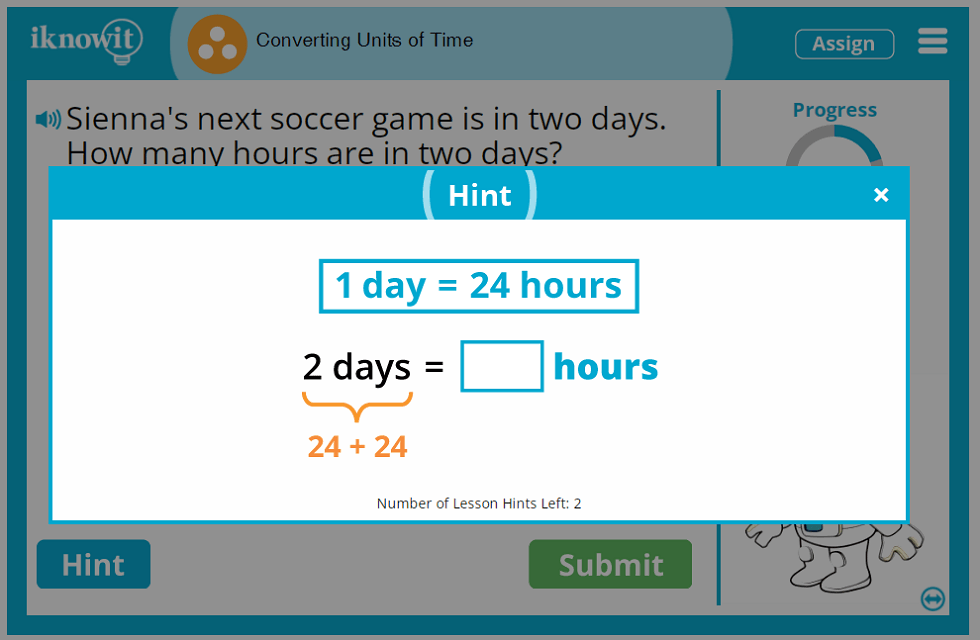
Digital Math Practice Makes Learning Exciting
Give your class a reason to get excited about math practice with interactive math games from I Know It ! Whether you are an elementary math teacher, homeschool educator, or school administrator, we're confident you will love using the I Know It online math program with your students. Check out a few highlights of our program from an educator's perspective:
- Choose from hundreds of math lessons covering dozens of foundational elementary math topics from kindergarten to fifth grade.
- Browse math lessons that have been written by accredited elementary math teachers to meet Common Core Standards.
- Customize your class's math practice experience with comprehensive administrator tools…and more!
Students, too, have lots to love about the I Know It digital math program:
- Adorable, animated characters dance around on the practice screen and do a clever trick when students submit a correct solution to a math problem.
- Plenty of positive feedback messages spur students on in their math practice even when they make mistakes.
- Bright colors and a bold, kid-friendly math lesson format presents each practice session as a fun, yet challenging math game... and more!
We hope you and your students will enjoy converting units of time in this online math lesson. Be sure to browse the hundreds of other 3rd grade elementary skill practice lessons in our collection as well.
Test the Waters or Dive Right In
Looking for a way to "test the waters" and see if the I Know It digital math practice program is right for you and your class? Sign up for a free thirty-day trial and try out this telling time game, as well as all of the math lessons available on our website, at no cost for a full thirty days! We're confident you and your students will love experiencing the difference interactive math practice can make. In fact, when your free trial ends, we hope you won't hesitate to join our community as a member. This way, your class can continue to enjoy the benefits of digital math practice for a full calendar year. We offer membership options for families, individual teachers, schools, and school districts. Visit our membership information page for details: https://www.iknowit.com/order.html .
Your I Know It membership unlocks the program's extensive administrator tools. You will discover a plethora of handy features in your parent or teacher administrator account that help you create a class roster and add your students to it, change basic math lesson settings, monitor student progress with detailed statistics, print, download, and email student progress reports, and much more. These administrator tools serve to help you customize your class's math practice experience.
Your students will log into I Know It with their unique username and password. From a kid-friendly version of the homepage, they can quickly find and launch math activities you have assigned to them for practice. If you choose to give them permission through your parent or teacher administrator account, students can also explore other math activities at their grade level and beyond for additional practice or an extra challenge. Grade levels in the student mode of I Know It are labeled with letters instead of numbers (i.e., "Level C" for third grade), making it easy for you to assign math lessons based on each child's needs and skill level.
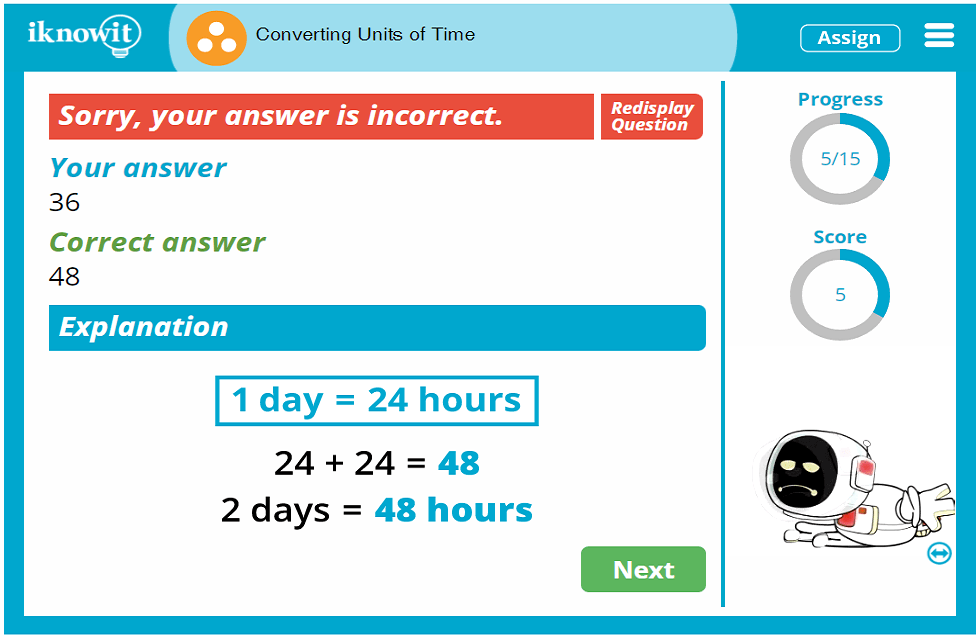
This math lesson is categorized as Level C. It may be ideal for a third grade class.
Common Core Standard
3.MD.1, MA.4.M.1.2, MA.5.M.1.1, 3.7C Measurement And Data Solve Problems Involving Measurement And Estimation Of Intervals Of Time, Liquid Volumes, And Masses Of Objects. Tell and write time to the nearest minute and measure time intervals in minutes. Solve word problems involving addition and subtraction of time intervals in minutes, e.g., by representing the problem on a number line diagram.
You might also be interested in...
Telling Time (Nearest 5 Minutes) (Level C) In this third grade-level math lesson, students will practice telling time to the nearest five minutes. Questions are presented in multiple-choice format and fill-in-the-blank format.
Telling Time (Nearest Minute) (Level C) In this math lesson geared toward third grade, students will practice telling time to the nearest minute. Questions are presented in fill-in-the-blank format and multiple-choice format.

- Full Site Index
- Membership Info
- School License Info
- Standards ( CC , FL , TX )
- Testimonials
- Monthly Contest
- Training for Teachers
- Roster Setup Service
- Privacy Policy
- Terms of Service
Enter your new class code.
Use only letters, numbers or a dash. The code can not begin with a dash (-)
This field is required and can not be blank.
Enter your class code.
converting units of time activity
All Formats
Resource types, all resource types.
- Rating Count
- Price (Ascending)
- Price (Descending)
- Most Recent
Converting units of time activity

End of Year Activities Digital Escape Room Math Game Grades 4-5

- Google Apps™
- Internet Activities
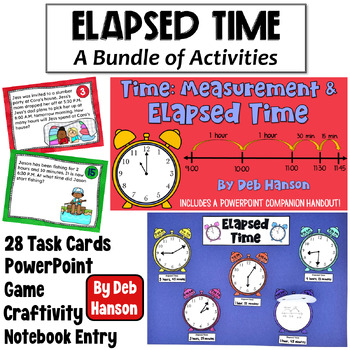
Elapsed Time : A Bundle of Activities

Elapsed Time Worksheets, Convert Units of Time Measurement Conversions 4th Grade

4th Grade Valentine's Day Math Activities Coloring by Number Worksheet Pages Fun
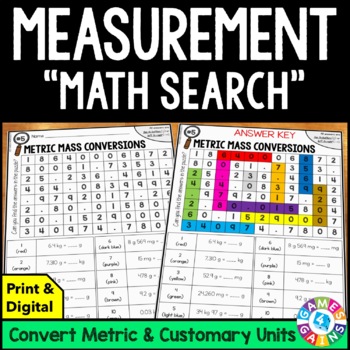
Convert Metric Customary Measurement Conversions Worksheet Activities 5th Grade
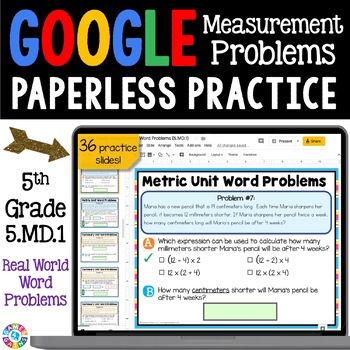
Metric Customary Conversion Word Problems Convert Measurement Activity 5th Grade
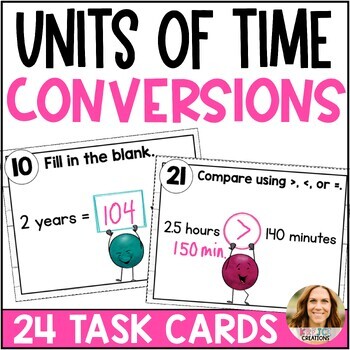
Convert Units of Time Task Cards - 4th Grade Math Center - 4.MD.A.1

5th Grade Measurement Activity Slides for Elapsed Time & Time Conversions
Converting Customary Units of Length Pixel Art Digital Activity

- Google Drive™ folder
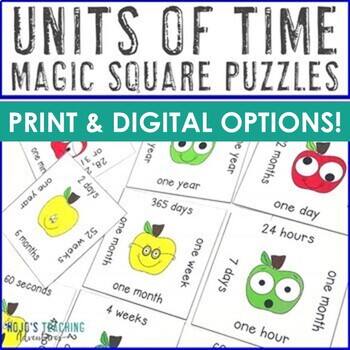
Converting Units of Time : seconds, minutes, hours, days, weeks, etc

Converting Units of Measurement Board Game Activity

Converting and Comparing Units of Time Digital Boom Cards - 4th Grade Math
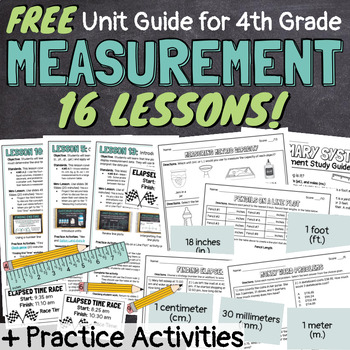
FREE 4th Grade Measurement 16 Lessons Unit Guide with Worksheets and Activities

Customary & Metric Conversion Practice, Converting Units of Measurement Game

Measurement Conversions | Converting Customary Units of Length Boom Cards

Converting Units of Length Digital Pixel Art Mystery Picture

Converting Units of Time Task Cards - Minutes, Hours, Days, Weeks, Years

Converting Units of Time - Seconds Minutes Hours & Days Challenge Cards

Secret Message Math - Converting Units of Time

Converting Units of Time - Seconds Minutes Hours & Days

Convert it! Units of Time Task Cards

Math Scavenger Hunt - Converting Units of Time
Converting Customary Units of Capacity Math Pixel Art
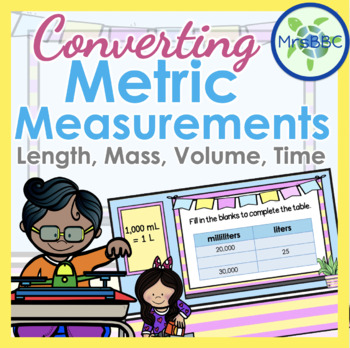
Converting Metric Units of Length, Mass, Volume, and Time Digital Boom Cards™

- We're hiring
- Help & FAQ
- Privacy policy
- Student privacy
- Terms of service
- Tell us what you think
- Toggle navigation
Mathematics Department Course Hub
- Project Profile
- Course Outline
- Faculty Announcements
- Course Coordination
- Training and Support
- Lesson 7: Measures of Length: Converting Units and the Metric System
Hi Everyone!
On this page you will find some material about Lesson 7. Read through the material below, watch the videos, and follow up with your instructor if you have questions.
Table of Contents
In this section you will find some important information about the specific resources related to this lesson:
- the learning outcomes,
- the section in the textbook,
- the homework,
- supporting video.
Learning Outcomes. (extracted from the textbook)
- Convert measurements of length in the English system.
- Convert measurements in the metric system.
- Convert between English and metric units of length.
Topic . This lesson covers
Section 8.1: Measures of Length: Converting Units and the Metric System
pages 451-458, ex . 1-8.
Practice Homework:
page 458: 9, 10, 12, 7-17 odd, 21, 33, 41, 49, 55, 61, 65, 70, 78, 81, 87, 89
ALEKS Assignment
Warmup Questions
These are questions on fundamental concepts that you need to know before you can embark on this lesson. Don’t skip them! Take your time to do them, and check your answer by clicking on the “Show Answer” tab.
Warmup Question 1
$$(3-x)^2.$$
Show Answer 1
$$(3-x)^2=(3-x)(3-x)=9-3x-3x+x^2=9-6x+x^2$$
Warmup Question 2
(a) If $\sqrt{x}=7$, what is $x$?
Which arithmetic operation did you perform to isolate $x$?
(b) Use the same arithmetic operation to solve
$$\sqrt{x} = 2a$$
where $a$ is positive.
Show Answer 2
(a) Squaring $\sqrt{x}=7$ isolates $x$.
$$\sqrt{x} = 7$$
$$(\sqrt{x})^2 =7^2$$
The solution set is $\{49\}$.
(b) Squaring
$$(\sqrt{x})^2 =( 2a)^2$$
The solution set is $\{4a^2\}$.
Warmup Question 3
$$x^2=-2x+35.$$
Show Answer 3
$$x^2=-2x+35$$
$$x^2+2x-35=0$$
$$(x+7)(x-5)=0$$
$$x+7 = 0 \quad\text{ or }\quad x-5=0$$
$$x=-7\quad\text{ or }\quad x=5$$
The solution set is $\{-7,5\}$.
If you are not comfortable with the Warmup Questions, don’t give up! Click on the indicated lesson for a quick catchup. A brief review will help you boost your confidence to start the new lesson, and that’s perfectly fine.
Need a review? Check Lesson 4 and Lesson 10 .
Quick Intro
This is like a mini-lesson with an overview of the main objects of study. It will often contain a list of key words, definitions and properties – all that is new in this lesson. We will use this opportunity to make connections with other concepts. It can be also used as a review of the lesson.
A Quick Intro to Radical Equations
Key Words. Radical equation, solution, squaring.
The first step in solving a radical equation is to get rid of the radical term. We can do that by using the following property from Lesson 4 :
$$(\sqrt x)^2=x.$$
So if the radical equation is
$$\sqrt{x-1}=2,$$
we simply square both sides
$$(\sqrt{x-1})^2=2^2$$
The potential solution is $x=5$. We will check it.
$\bullet$ Check :
$$\sqrt{x-1}\stackrel{?}{=}2$$
$$\sqrt{5-1}\stackrel{?}{=}2$$
$$\sqrt{4}\stackrel{?}{=}2\quad\checkmark$$
The solution set is $\{5\}$.
$\bigstar$ The squaring method works best if the radical term is isolated . For example, for the equation
$$\sqrt x + 1 =3,$$
squaring $\sqrt x +1$ gives
$$(\sqrt{x}+1)^2 = x+2\sqrt x +1,$$
and we still have a radical term; so that is not helpful. Watch the video for more examples of this type.
Try Questions I
Now that you have read the material and watched the video, it is your turn to put in practice what you have learned. We encourage you to try the Try Questions on your own. When you are done, click on the “Show answer” tab to see if you got the correct answer.
Try Question 1
$$\sqrt x + 1 =3.$$
$$\sqrt x + 1 =3$$
$$\sqrt x =3-1$$
$$\sqrt x =2$$
$$(\sqrt x )^2 =2^2$$
The potential solution is $x=4$. We will check it.
$$\sqrt 4 + 1 \stackrel{?}{=}3$$
$$2+1 \stackrel{?}{=}3$$
$$3 =3\quad\checkmark$$
The solution set is $\{4\}$.
Video Lesson
Many times the mini-lesson will not be enough for you to start working on the problems. You need to see someone explaining the material to you. In the video you will find a variety of examples, solved step-by-step – starting from a simple one to a more complex one. Feel free to play them as many times as you need. Pause, rewind, replay, stop… follow your pace!
A description of the video
In the video you will see how to solve
- $\sqrt x = 4$
- $\sqrt {x-1}=2$
- $\sqrt {x-1}+3=15$
- $x-\sqrt{3x-5}=1$
- $\sqrt x =-2$
- $2=x-\sqrt{6-5x}$
- $x-2=2\sqrt{x+1}-x$
Try Questions II
Try question 2.
Solve $$\sqrt{y-4}+y=4.$$
$$\sqrt{y-4}+y=4 $$
$$\sqrt{y-4}=4-y $$
$$(\sqrt{y-4})^2=(4-y)^2 $$
$$y-4= (4-y)(4-y) $$
$$y-4=16 – 8y + y^2 $$
$$0 = y^2-9y+20 $$
$$y^2-9y+20 = 0 $$
$$(y-4)(y-5) = 0 $$
$$y=4 \quad\text{ or } \quad y=5$$
The potential solutions are $y=4$ and $y=5$. We will check them now.
$\bullet$ Check: $y=4$
$$\sqrt{y-4}+y\stackrel{?}{=}4 $$
$$\sqrt{4-4}+4\stackrel{?}{=}4 $$
$$0+4\stackrel{?}{=} 4 $$
$$4 = 4 \qquad \checkmark$$
$\bullet$ Check : $y=5$
$$\sqrt{5-4}+5\stackrel{?}{=}4 $$
$$1+5 \stackrel{?}{=} 4 $$
$$6 \neq 4 \qquad \text{ False }$$
So $y=5$ is not a solution. The solution set is $\{4\}$.
You should now be ready to start working on the homework problems. Doing the homework is an essential part of learning. It will help you practice the lesson and reinforce your knowledge.
It is time to do the homework on WeBWork:
RadicalEquations
When you are done, come back to this page for the Exit Questions.
Exit Questions
After doing the WeBWorK problems, come back to this page. The Exit Questions include vocabulary checking and conceptual questions. Knowing the vocabulary accurately is important for us to communicate. You will also find one last problem. All these questions will give you an idea as to whether or not you have mastered the material. Remember: the “Show Answer” tab is there for you to check your work!
- When we are trying to solve a radical equation, what are we trying to accomplish?
- Why do we isolate the term with the radical?
- Is it necessary to check our answers even if we know we did not make a mistake? Give an example to support your answer.
$\bigstar$ Solve the equation $2\sqrt{p-3} -3 = -p$.
Show Answer
$$2\sqrt{p-3} -3 = -p$$
$$2\sqrt{p-3} = -p+3$$
$$(2\sqrt{p-3})^2 = (-p+3)^2$$
$$2^2(\sqrt{p-3})^2 = (-p+3)^2$$
$$4(p-3) = p^2-6p+9$$
$$4p-12 = p^2-6p+9 $$
$$-p^2+10p-21=0 $$
$$p^2-10p+21=0 $$
$$(p-3)(p-7) =0$$
$$p-3=0 \quad \text{or} \quad p-7 =0 $$
$$p=3 \quad \text{or} \quad p=7$$
The potential solutions are $p=3$ and $p=7$. We will check them.
$\bullet$ Check: $p=3$
$$2\sqrt{3-3} -3 \stackrel{?}{=} -3$$
$$2\cdot 0 -3 \stackrel{?}{=} -3$$
$$-3 \stackrel{?}{=} -3 \qquad\checkmark$$
$\bullet$ Check : $p=7$
$$2\sqrt{p-3} -3 = -p $$
$$2\sqrt{7-3} -3 \stackrel{?}{=} -7$$
$$2\cdot 2 -3 \stackrel{?}{=} -7$$
$$1 \stackrel{?}{=} -7 \qquad \text{False}$$
The solution set is $\{3\}$.
Need more help?
Don’t wait too long to do the following.
- Watch the additional video resources.
- Talk to your instructor.
- Form a study group.
- Visit a tutor. For more information, check the tutoring page .
Lessons Menu
- Lesson 1: Applications of Linear Equations
- Lesson 2: Ratio, Proportion, and Variation
- Lesson 3: The Nature of Mathematical Reasoning
- Lesson 4: Estimation and Interpreting Graphs
- Lesson 5: Problem-Solving Strategies
- Lesson 6: Statement and Quantifiers
- Lesson 8: Measures of Area, Volume, and Capacity
- Lesson 9: Measures of Weight & Temperature
- Lesson 10: Percents
- Lesson 11: Simple Interest
- Lesson 12: Compound Interest
- Lesson 13: Basic Concepts of Probability
- Lesson 14: Tree Diagrams, Tables and Sample Spaces
- Lesson 15: Gathering and Organizing Data/Picturing Data
- Lesson 16: Measures of Average
- Lesson 17: Measures of Variation
- Lesson 18: Measures of Position
- Lesson 19: The Normal Distribution/Applications of the Normal Distribution
- Lesson 20: Correlation and Regression Analysis
- Lesson 21: Points, Lines, Planes & Angles
- Lesson 22: Triangles
- Lesson 23: Polygons and Perimeter/Areas of Polygons and Circles
© 2024 MAT 1190 Course Hub
Theme by Anders Noren — Up ↑
The OpenLab at City Tech: A place to learn, work, and share
The OpenLab is an open-source, digital platform designed to support teaching and learning at City Tech (New York City College of Technology), and to promote student and faculty engagement in the intellectual and social life of the college community.

New York City College of Technology | City University of New York
Accessibility
Our goal is to make the OpenLab accessible for all users.
Learn more about accessibility on the OpenLab
Creative Commons
- - Attribution
- - NonCommercial
- - ShareAlike

© New York City College of Technology | City University of New York

IMAGES
VIDEO
COMMENTS
Multiplication is done to convert the larger units of time to smaller units of time. For example, to convert 5 hours to minutes. We multiply by 60 as 1 hours equals to 60 mins. Thus, 5 hours in minutes will be 5×60 = 300 mins. McGraw Hill My Math Grade 4 Chapter 11 Lesson 7 My Homework Answer Key. Practice. Convert units to complete each equation.
1 minute = 60 seconds. 1 hour = 60 minutes. To convert larger units to smaller units we multiply the number of larger units by 60 . Example: Converting hours to minutes. 1 hour = 60 minutes. 6 hours = 6 × 60 = 360 minutes.
Ch 11 Lesson 7 McGraw-Hill, My Math, Volume 2
Converting Time Units When the man threw the clock out the window, he wanted to see time fly. There are probably hundreds of jokes about time, but this lesson will teach you how to convert, or change, the different units of time. The units of time include: seconds, minutes, hours, days, weeks, months, years, decades, centuries
Lesson 8: Converting units of time. Converting units of time. Convert to smaller units (sec, min, & hr) Time word problem: travel time. Time word problem: Susan's break. Time conversion word problems. Converting units of time review (seconds, minutes, & hours) Math > 4th grade > Units of measurement >
The units of time we use most often include: 60 seconds = 1 minute, 60 minutes = 1 hour, 24 hours = 1 day, 7 days = 1 week, 365 days = 1 year, 52 weeks = 1 year, 10 years = 1 decade, and 100 years = 1 century. The lesson also lists some helpful conversion to remember, like that the phrase "quarter of an hour" means 15 minutes.
Show step. 1 \text { hour }=60 \text { minutes. } 1 hour = 60 minutes. Draw conversion table and label with correct units. Show step. Add on the number of units until you reach the final answer. Show step. 2 \text { hours }=60+60=120 \text { minutes } 2 hours = 60 + 60 = 120 minutes.
Time word problem: Susan's break. Dive into the concept of converting units of time, specifically minutes into hours. Understand the importance the relationship between these units and demonstrates how to apply this knowledge to solve real-world problems involving time intervals. Created by Sal Khan.
Converting Hours to Minutes. Two tips to remember: 1 hour = 60 minutes. We are going from a larger unit of time to a smaller unit of time, so multiply! Ex. Convert two and a half hours to minutes. Multiply 2 by 60 to get 120. Add 30 minutes. 120+30=150. There are 150 minutes in two and a half hours.
23 Downloads Grade 4 Adding Mixed Time. 137 Downloads K Sequence of Days of the Week. 244 Downloads Grade 3 Read Clocks and Write the Time. In order to convert units of time, you must first know how these units relate to each other. Time Relationships 60 seconds = 1 minute 60 minutes = 1 hour 24 hours.
This is the time measurement that you have. Step 2. Know what unit you are converting to. Step 3. Find out the conversion ratio between the units. Step 4. Multiply or divide depending on what unit is being converted to. Multiply if converting from a larger time unit to a smaller one. Divide if converting from a smaller time unit to a larger one.
About Press Copyright Contact us Creators Advertise Developers Terms Privacy Policy & Safety How YouTube works Test new features NFL Sunday Ticket Press Copyright ...
Conversion of units can happen from the smaller unit to the larger unit or the reverse. 1. Second and minute interconversion. To remember: 1 minute = 60 seconds. Second to minute. Divide the time ...
14. hr. min. sec. SmartScore. out of 100. IXL's SmartScore is a dynamic measure of progress towards mastery, rather than a percentage grade. It tracks your skill level as you tackle progressively more difficult questions. Consistently answer questions correctly to reach excellence (90), or conquer the Challenge Zone to achieve mastery (100)!
In Lesson 3, students investigate the relationships between units of time. They discover a similarity in converting from hours to minutes and minutes to seconds. Students are able to reason that, for both sets of conversion, the values in the two tables will be the same because there are 60 seconds in a minute and 60 minutes in an hour.
Lesson 7 Convert Units of Time The steps that you use to convert units of length, weight, and capacity can be used to convert units of time. Watch Math in My World Example 1 Cooper watched a butterfly in his garden for 5 minutes. How many seconds did he watch the butterfly? 1 minute = 60 seconds To convert larger units of time to smaller units
Lesson 7: Topic 7. Converting units: minutes to hours ... Converting units of time review (seconds, minutes, & hours) Converting units: metric distance. Converting units: centimeters to meters. Convert units (metrics) Metric units of mass review (g and kg) ... Converting units: minutes to hours. Report a problem.
Instructional Materials See instructional materials listed above. Standards MA.4.MD.A.1 Know relative sizes of measurement units within one system of units including km, m, cm,
Understanding Time - Unit Plan. 9 x lessons | Suitable for grades: 2 - 3. This Mathematics unit addresses telling time to the minute, the relationship between units of time, converting between units of time, and using 'am' and 'pm' notation to solve simple time problems. It consists of 8 lessons with each lesson lasting approximately 60 minutes.
Students will practice converting days to weeks, hours to days, minutes to hours, and so on in this digital math game. Here are a few sample math questions your students may be expected to answer in this telling time activity: "Drag and drop the symbol that makes the number sentence true. 300 minutes is [greater than, less than, or equal to] 3 ...
Browse converting units of time activity resources on Teachers Pay Teachers, a marketplace trusted by millions of teachers for original educational resources. ... minutes, hours, days, weeks, months, and years. This set aligns with lesson 12.8 of the 4th grade Go Math curriculum but can be used with any common core math curriculum. Task cards ...
First two textbook examples in the McGraw-Hill, My Math Volume 2. Ch. 11 Measurement, Lesson 7 Convert Customary Units of Capacity
Radical equation, solution, squaring. The first step in solving a radical equation is to get rid of the radical term. We can do that by using the following property from Lesson 4: ( x) 2 = x. So if the radical equation is. x − 1 = 2, we simply square both sides. ( x − 1) 2 = 2 2. x − 1 = 4.